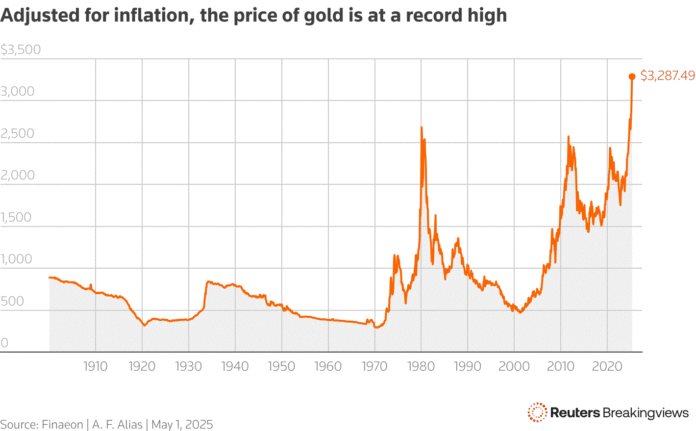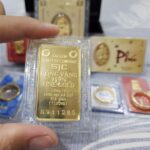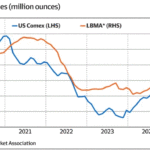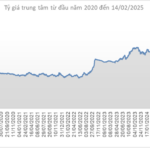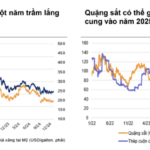After surging 25% this year, gold (inflation-adjusted) has risen above its all-time historical high (reached in the early 1980s). This precious metal is now trading at a level three standard deviations above its long-term trend. While gold has retained its allure for millennia, the metal has proven to be a relatively poor hedge against inflation in the short term.
Historically, gold has never been more expensive, both in real terms and relative to other commodities. “The real value of gold, similar to the price-to-earnings (P/E) ratio of stocks, is at a record high,” says Campbell Harvey of Research Affiliates, adding that very high P/Es are typically associated with low expected returns.
Gold’s historical record shows a similar pattern.” Since 1975, investors who bought gold at high prices have lost money in the subsequent decade. In contrast, buying gold when it was relatively cheap has yielded positive (inflation-adjusted) returns.
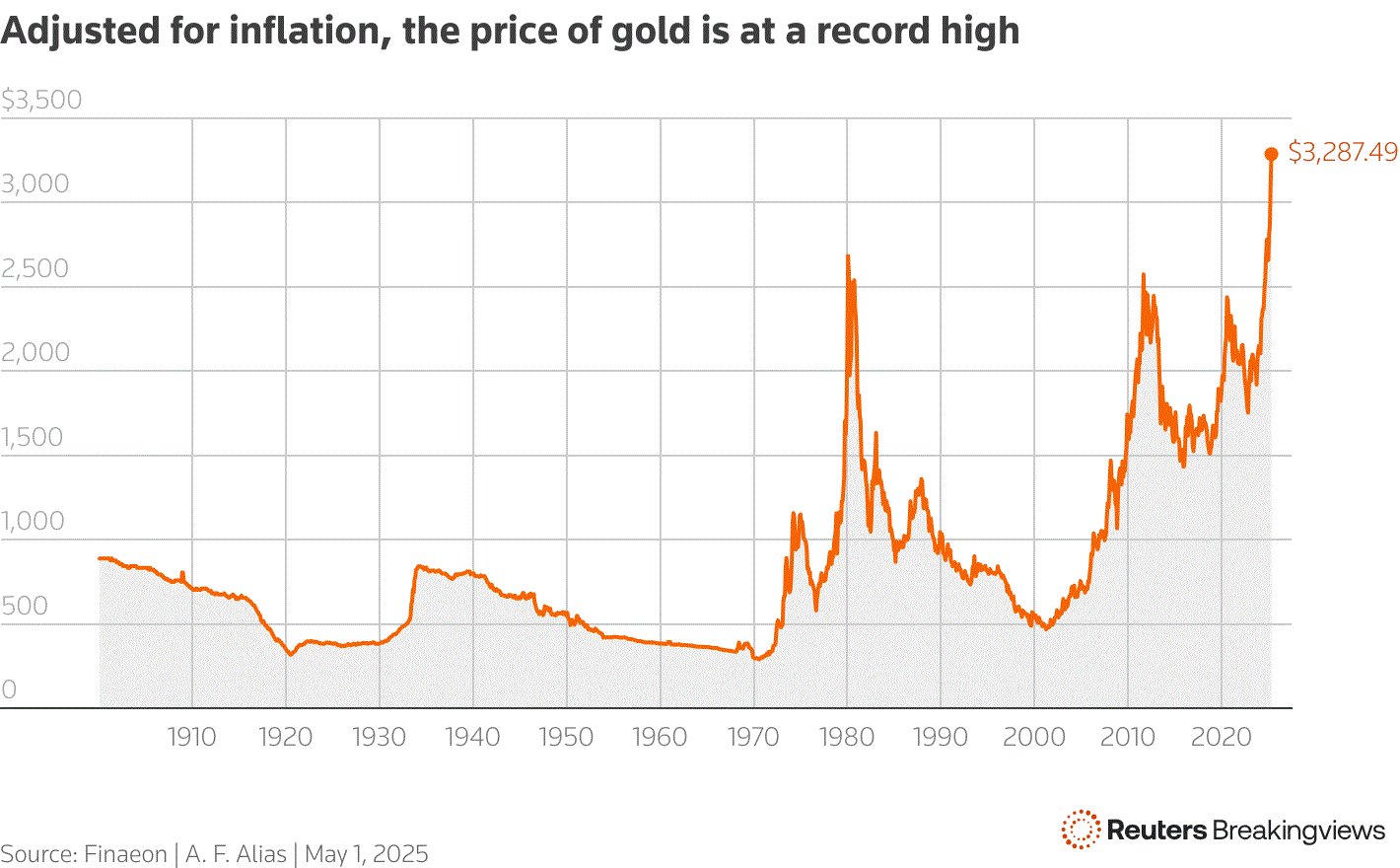
Gold prices (inflation-adjusted) are at an all-time high.
Today, gold is misaligned with some other commodities. Over the past half-century, an ounce of gold has averaged 21 times the price of a barrel of oil. Currently, the gold-to-oil ratio is over 50 times – the highest ever, except for a brief period in 2020. Gold also appears expensive relative to silver. Since 1975, on average, 60 ounces of silver could be bought for one ounce of gold. Today, gold is worth around 100 times its cheaper cousin.
There is another precious metal that appears even cheaper than gold. Platinum is a metal that may not have the same allure as gold but is far rarer. Global platinum production is concentrated in deep mines located in a small area in Southern Africa. Platinum has experienced a rollercoaster ride in recent years. In the first decade of this century, the metal was caught up in a mining boom-and-bust cycle. Mining operations were disrupted during the pandemic, after which platinum prices surged above $1,200 per ounce in the spring of 2021. Since then, prices have fallen back below $1,000. In fact, platinum is currently trading around 25% below its 50-year average.
According to Bryan Taylor, chief economist at Finaeon (formerly Global Financial Data), platinum has proven to be more stable in price than gold since 1900. In the past 50 years, the gold-to-platinum price ratio has averaged about parity. However, since 2015, gold has surged and is now trading at three times the price of platinum. Relative to gold, platinum has never been cheaper.
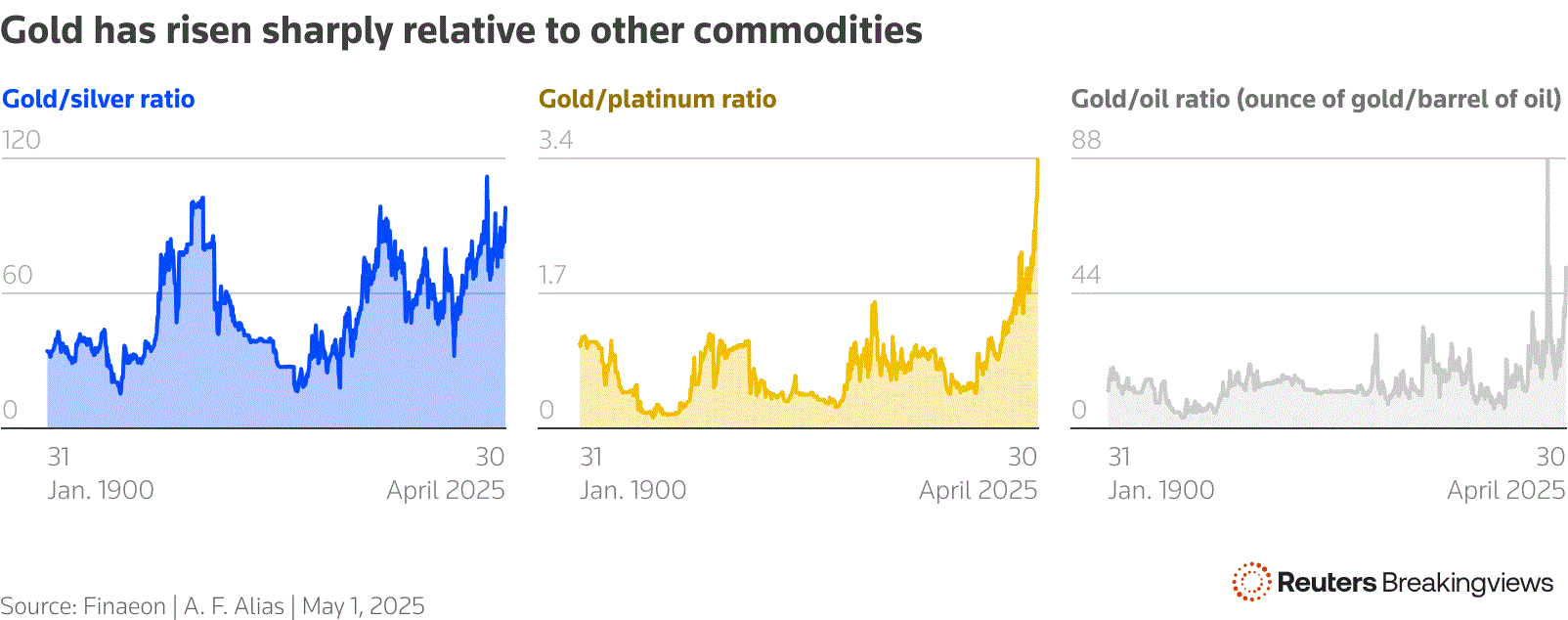
Gold prices have surged relative to other commodities.
What do these comparisons mean? Many view gold as a substitute for unstable paper currencies. While silver and platinum are officially designated monetary metals, they lack the strong brand that their rival – gold – possesses.
The international monetary system – currently dominated by the US dollar – is at risk of weakening. After the US and its allies froze Russia’s foreign exchange reserves in 2022, China and other central banks accelerated their gold purchases.
Previously, gold has undergone several regime changes. For example, when the gold standard collapsed in the early 1930s, the official price of the metal rose from $20.67 per ounce to $35. After the post-war Bretton Woods fixed exchange rate system collapsed in the late 1960s, gold became extremely volatile but was stable in real value at a higher average price. Looking further back in history, the demonetization of silver in the industrial economies of the Western world in the second half of the 19th century permanently reduced silver’s market value relative to gold.
Gold may be in the early stages of another regime change. Moreover, while the yellow metal benefits from economic instability, industrial commodities are vulnerable to a global economic recession. At the onset of the COVID pandemic in 2020, oil futures prices briefly turned negative. About half of annual silver production is used for industrial applications, while three-quarters of platinum demand comes from industrial sectors. If the global economy slips into a recession, these commodities are sure to be impacted.
Investors should also consider another threat. The platinum group metals, including palladium and rhodium, are prized for their ability to withstand high temperatures. About 44% of platinum production is used in automotive catalytic converters to reduce pollution from internal combustion engines. The goal of some governments to end the sale of traditional motor vehicles threatens the long-term demand for oil and platinum and related metals, which are not used in battery-powered electric vehicles.
However, outside of China, the rapid development of electric vehicles has stalled. Last year, the German government ended subsidies for electric vehicle purchases. US President Donald Trump overturned Joe Biden’s target of making half of US vehicle sales electric by 2030. Plug-in hybrid electric vehicles have been gaining market share. These vehicles use more platinum group metals than oil- and diesel-powered cars. UBS, which lowered its forecast for global penetration of battery-powered electric vehicles in 2030 from 50% to 40% last year, expects demand for platinum group metals to remain stable in the medium term. Impala Platinum, one of the largest mining companies, reports “robust” ongoing demand from its customers. On the other hand, the supply of these rare metals is becoming increasingly restricted.
According to Django Davidson of Hosking Partners, platinum mining companies have underinvested in recent years. They have little incentive to invest because many operations are unprofitable at current market prices. The World Platinum Investment Council states that platinum supply will be 17% lower than demand in 2024 and expects supply shortages to continue in the coming years.
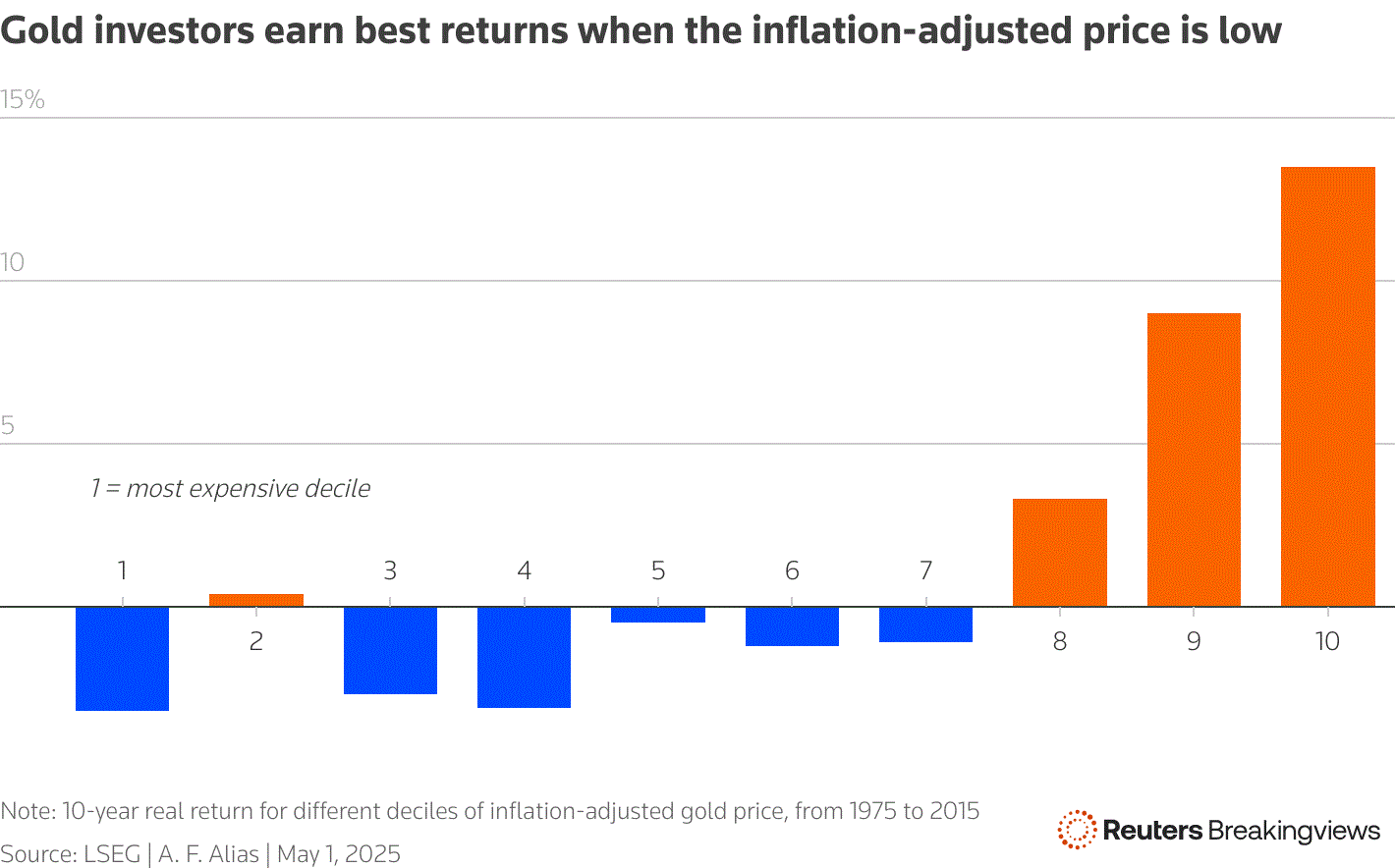
Gold has delivered the highest returns for investors when they bought when prices (inflation-adjusted) were low.
The parabolic price moves suggest gold may be in a bubble. Speculators may continue to make money in the short term. But investors seeking to protect their wealth over the long term should look elsewhere. Compared to gold, oil and silver look extremely cheap. Platinum can be considered bubble-immune. With both price and supply down, this rarest of precious metals appears to be a better store of value than gold.
Reference: Reuters
Gold Prices Soar Following US’s 90-Day Tariff Reprieve
Global gold prices continued their upward surge during the trading session this morning (April 10th, Vietnam time), despite improved investor sentiment following US President Donald Trump’s announcement of a 90-day delay in retaliatory tariffs and a reduction to 10% for economies other than China.
Commodity Prices in 2025: Gold to Hit $3,000/ounce, While Oil and Iron Ore Remain Lackluster?
In 2025, Goldman Sachs predicts gold prices will soar to $3,000 per ounce by year-end, as the Fed is expected to cut interest rates twice. This forecast is influenced by the uncertainty surrounding Trump’s policies and their potential impact on the global economy.

